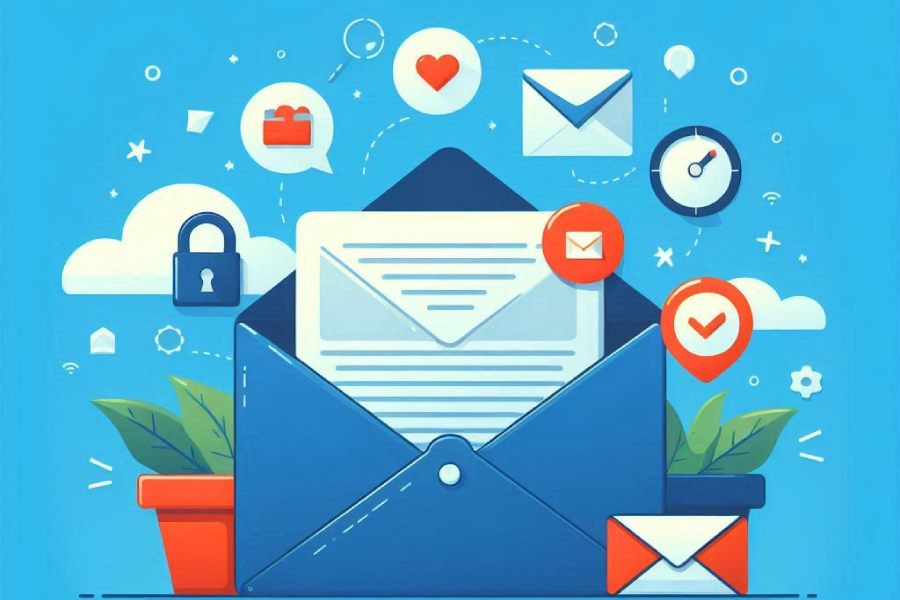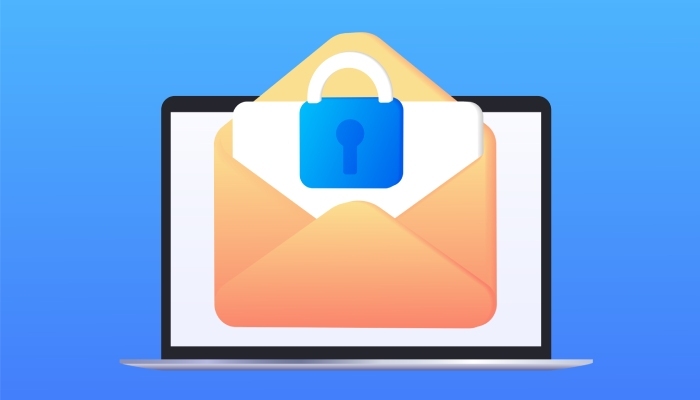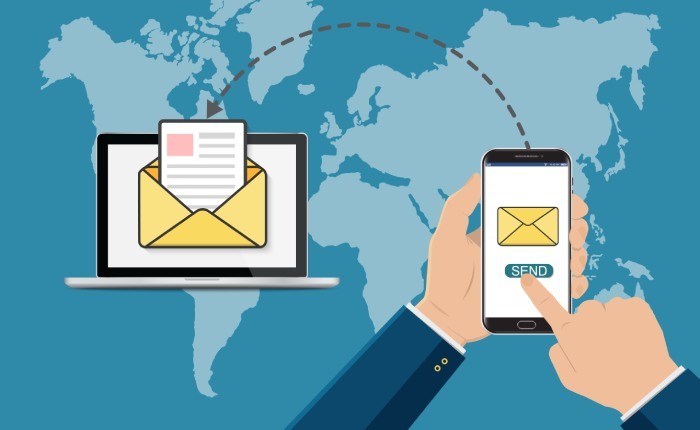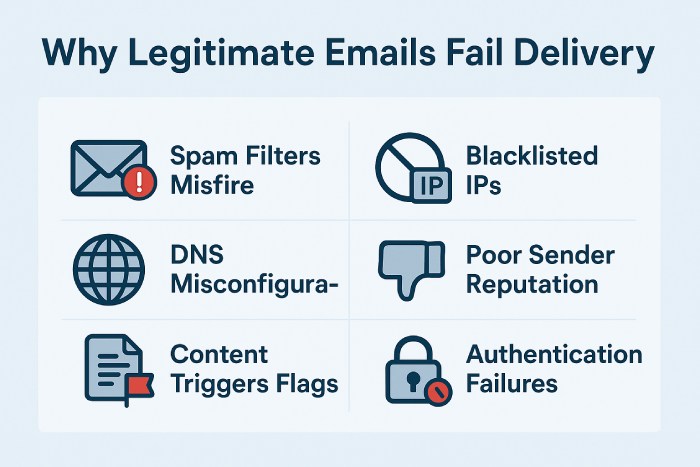Why should you care about DMARC? What happens if you don’t?
Apart from the fact that most major email service providers and organizations have made DMARC mandatory, many teams enable it without fully understanding what it does or why it matters.
But is it just a formality or a check box that you must tick off? Not at all!
DMARC is an email authentication protocol that tells email providers how to handle messages that don’t pass authentication checks. What this means is that if someone tries to send an email using your domain without proper authorization, DMARC clearly tells the receiving server what should be done with the email, whether it should be rejected or sent to spam. Either way, DMARC ensures that suspicious emails do not reach your users directly. Moreover, with its reporting feature, you can track who is sending emails on behalf of your domain, both legitimate sources and potentially malicious ones.
So no, DMARC isn’t just a formality, but it’s something that deserves your attention.
To really understand what it brings to the table, let’s dig in deeper.
What is DMARC?
As we mentioned earlier, DMARC is an email authentication protocol, but it isn’t like any other protocol that operates in isolation. DMARC works alongside SPF (Sender Policy Framework) and DKIM (DomainKeys Identified Mail), and builds on them by adding a layer of instruction and reporting.
SPF and DKIM each do their part. SPF checks whether the email is coming from an authorized server, and DKIM verifies that the content hasn’t been altered in transit. But on their own, they don’t define what happens if something fails. That’s where DMARC comes in.
With DMARC, you can set a policy that tells receiving mail servers exactly how to handle unauthenticated messages. You can start by monitoring activity (p=none), then move to more assertive settings, such as sending suspicious emails to spam (p=quarantine) or rejecting them altogether (p=reject).
Another important aspect of DMARC is reporting. DMARC also sends you reports that show how your domain is being used (or misused). You need this kind of visibility, as it helps you identify any discrepancies in your DMARC record. Let’s say you missed adding a legitimate source or spotted an unauthorized sender attempting to impersonate your domain. These reports will help you recognize and fix them.
Why DMARC isn’t optional anymore?
As you know, major email platforms like Google, Yahoo, and Microsoft have now made it mandatory for bulk email senders to enforce DMARC. Clearly, this guideline isn’t arbitrary; it shows a broader shift in how email security is being handled and how DMARC is capable of protecting your email infrastructure.
Let us take a look at some reasons why DMARC is now a mandatory practice for organizations across the world.
Your domain can be misused without you knowing
Anyone can try to send emails that look like they’re coming from your domain. If you haven’t set up DMARC, there’s no way you can stop them, and the worst part is that you will never know. These emails won’t show up in your systems, but your users or partners might receive them. That makes detection difficult unless you have proper reporting in place. DMARC helps close that gap by showing you what’s happening behind the scenes.
SPF and DKIM alone don’t prevent delivery
SPF and DKIM check the message, but they don’t say what should happen if those checks fail. That’s something that the receiving server decides. If you don’t tell what to do, the unauthenticated emails claiming to come from your domain, the receiving server will let them through. This is why you need DMARC. It clearly tells the server what to do when something fails.
Reporting gives you visibility you don’t otherwise have
If someone gets a fake email that looks like it came from your domain, they won’t know it’s fake. At the end, it will look like it came from you, and you probably won’t even know that a malicious email, perhaps with a harmful link or attachment, was sent out under your name. DMARC reports help fix that. They show you who is sending emails using your domain, whether those emails passed the right checks, and how they were handled. This gives you a clearer view of what’s happening behind the scenes, so you can catch issues early and make sure only trusted sources are sending on your behalf.
Build and maintain brand trust
If a user receives a scam email from what looks like your domain, or even worse, they fall for it; they will never be able to trust your brand again. Even though you had nothing to do with the fraudulent email, the damage is done. Your audience will be apprehensive about opening your messages, clicking your links, or acting on what you say. DMARC helps reduce that risk by making it harder for attackers to send emails using your name. It’s a small step that goes a long way in protecting your reputation.
What happens if you don’t implement DMARC?
Let’s say if DMARC were optional, you might think skipping it wouldn’t matter much, especially if your emails are well-curated and your systems are secure. But the problem isn’t just about what you send. It’s about what others can send using your domain.
Here’s what can happen if you don’t protect your domain with DMARC-
Financial fallout from domain abuse
You may not send spam or scam emails, but that doesn’t stop someone else from using your domain to do it. And when that happens, you’re the one who ends up paying the price (both literally and otherwise).
The cost isn’t just about fixing the technical issue. It’s also the time your staff spends troubleshooting the problem, answering confused consumers, and trying to recover trust. That alone can be days, and that piles up.
Then there’s the business impact. If people no longer trust your emails, they might stop interacting with your brand altogether. It could lead to delayed payments, your client might not go through with the deals, and your partners might start questioning how seriously you take security. It will ultimately hit your bottom line.
Legal exposure and compliance risks
If someone uses your domain to send harmful or fraudulent emails, you could face legal consequences, even if you didn’t send the email yourself. As a business owner, you are expected to take basic steps to protect your systems and digital presence. That includes setting up DMARC.
In most industries, this is now no longer merely a recommended practice; it is a compliance standard. Even if you weren’t personally involved, if someone abuses your domain and causes financial loss or releases personal information, you can get into legal trouble and might have to deal with audits, pay fines, or fix things quickly to meet regulatory requirements.
It becomes stressful and expensive very quickly. So, if you want to avoid this trouble, you must implement DMARC. Taking this one step shows stakeholders that you’ve taken responsibility for your domain and are making a clear effort to prevent misuse.
Loss of trust and long-term brand damage
Once a customer loses their trust in your brand, it is very difficult to regain it. They might stop opening your emails, avoid clicking on anything you send, or even stop doing business with you altogether. And it’s not just customers, partners, and vendors who may also hesitate if they feel your systems aren’t secure.
So, it’s better that you protect your brand reputation to maintain the trust, rather than rebuilding it (it will never be the same, though). DMARC helps you do that by reducing the chances of someone using your domain to send fake or harmful emails.
Deliverability issues even for legitimate emails
If your domain doesn’t have proper authentication, such as DMARC, in place, even your legitimate emails can get flagged as suspicious. If the receiving servers don’t know or aren’t sure of the legitimacy of your message, they might send your email to spam or block it entirely.
This could be an important email, like one with invoices, updates, or customer communication, that might not reach the inbox at all. Even though you might have done everything right, without DMARC, your email might still not get delivered.
To wrap it all up
Still on the fence about deploying DMARC? We hope this article clears up why it’s not just a technical add-on, but a necessary step to protect your domain, your brand’s reputation, and most importantly, your bottom line.
It’s just not worth the risk when the stakes are so high!
So, the easiest way to strengthen your defences is by setting up DMARC. It is one of the most effective things you can do to stay ahead of threats and keep your emails and your brand safe.
So, are you ready to start implementing DMARC for your domain? Not sure where to start or need assistance with DMARC enforcement? We’re here to assist! Contact us today to get started!





